| Word | Class Definition | Alternative Definition | Image of the word |
| Algorithm | An ordered set of well-defined instructions for the solution of a problem in a finite number of steps. [IBO] | A programmed set of mathematical formulas developed for a computer environment to perform a specific function (tbcintergration,2011). |  s s
Example of a algorithm. |
| Application Software | Application software, also known as an application, is computer software designed to help the user to perform singular or multiple related specific tasks. Examples include enterprise software, accounting software, office suites, graphics software, and media players. | Application software, also known as an application, is computer software designed to help the user to perform singular or multiple related specific tasks. Examples include enterprise software, accounting software, office suites, graphics software, and media players (wikipedia, 2011).
| 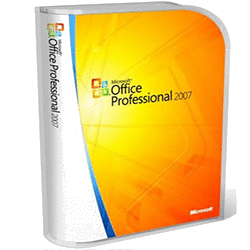
Example of application software. |
| ASCII | Americian Standard for Information Interchange; an international standard for encoding character into 7-bit code; ASCII is the basis of the more modern and inclusive Unicode Standard(16bit) | A code for information exchange between computers made by different companies; a string of 7 binary digits represents each character; used in most microcomputers (wordnetweb.princeton.edu/perl/webwn). | 
ASCII codes of some characters. |
| Binary Code | A scheme for encoding data using only two digit 0 and 1; binary code can be used to encode text, image, sound and program amongst other data. | A binary code is any system of representing text or computer processor instructions by the use of the binary number system's two-binary digits "0" and "1". This is accomplished by assigning a number to each particular symbol or instruction (wikipedia, 2011). | 
Example of a binary code. |
| Bit | Contraction of the term binary digit, hence 0 or 1 | A bit or binary digit is the basic unit of information in computing and telecommunications; it is the amount of information that can be stored by a digital device or other physical system that can usually exist in only two distinct states(wikipedia, 2011). | 
One digit is a bit. |
| Booting | The process by which a computer loads it's operating system in primary storage from secondary storage using the instructions found in ROM. | To start up your computer. Because the computer gets itself up and going from an inert state, it could be said to lift itself up "by its own bootstraps" -- this is where the term 'boot' originates(v-com,2011). | 
Booting screen of a computer with Windows 7 OS. |
| Bus | An electrical connection through which data are transmitted, there is a starting and ending point. | In a computer or on a network, a bus is a transmission path on which signals are dropped off or picked up at every device attached to the line. Only devices addressed by the signals pay attention to them; the others discard the signals(Mybootdisks,2011). | 
Example of a bus. |
| Byte | Contraction of the term Binary Term; the smallest unit of information, which can be acessed directly by a computer. | A sequence of 8 bits (enough to represent one character of alphanumeric data) processed as a single unit of information (wordnetweb.princeton.edu/perl/webwn). | 
Example of a byte. |
| Character | A single letter or digit, or a special symbol like puncutation marks, the dollar sign and blank space. | In computer and machine-based telecommunications terminology, a character is a unit of information that roughly corresponds to a grapheme, grapheme-like unit, or symbol, such as in an alphabet or syllabary in the written form of a natural language (wikipedia, 2011).
| 
A character. |
| Computer | A programmable electronic device for the processing of information. | A device that computes, especially a programmable electronic machine that performs high-speed mathematical or logical operations or that assembles, stores, correlates, or otherwise processes (Answers,2011).
| 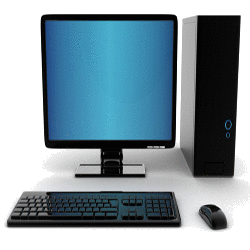
Image of a computer. |
| CPU | Central Processing Unit; a miniatunized electronic component which controls the execution of a computer and which performs basic arithmetic and logical operations. Colloquically called the computers "brain" | CentralProcessing Unit: (computer science) The part of a computer (a microprocessor chip) that does most of the data processing; "The CPU and the memory form the central part of a computer to which the peripherals are attached" (wordnetweb.princeton.edu/perl/webwn). | 
Image of the CPU of a computer. |
| Directory | A logical collection of files stored under a single name | A listing of the files stored in memory (usually on a hard disk) (wordnetweb.princeton.edu/perl/webwn). | 
Example of a directory. |
| File | A logical collection of data stored under a single name. | File is a standard Unix program for determining the type of data contained in a computer file (wikipedia, 2011). | 
Example of a file in a directory. |
| FireWire | Apple's name for the IEEE 1394 high speed serial bus. Also called iLink by Sony and LINX by Texas | Apple's name for their implementation of IEEE 1394 (paralan,2011). | 
Apple's FireWire. |
| Gigabyte | 230 (approximately 1 billion) | A unit of information equal to 1000 megabytes or 109 (1000000000) bytes (wordnetweb.princeton.edu/perl/webwn). | 
A gigabyte. |
| Hardware | The physical components of the computer; any part of the computer which can be seen and touched. | The mechanical, magnetic, electronic, and electrical components making up a computer system (wordnetweb.princeton.edu/perl/webwn). | 
Example of a hardware in your computer. |
| Information | Words, pictures and sounds which have meaning to us. | The result of processing, manipulating, and organizing data in a way that adds to the knowledge of the person receiving it (extension.iastate,2011). | 
Symbol which stands for information. |
| Input Device | Devices used to put in information into a computer. Common examples are; keyboards, mouses, scanners and cameras. | A variety
of devices, which allow a human to machine interface. This allows the human to program, control, and simulate the robot. Such devices include programming
pendant, computer keyboards, a mouse, joy-sticks, push buttons, operator panel, and operator pedal. (motoman,2011). | 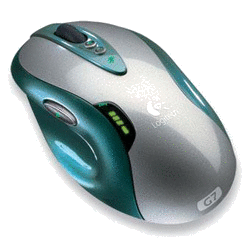
Example of input devices. |
| Kilobytes | 210 | The term kilobyte is commonly used to refer to one thousand bytes. However, the more technical meaning is 1024 bytes. Both usages are correct, and, fortunately, the difference is sufficiently small that it can usually be ignored (linfo,2011). | 
Image of 37 kilobyte. |
| Megabyte | 220 | A measure, representing 1000000 bytes generally used to express the storage capacity of digital components. A byte represents a single character, or group of eight bits (22.version,2011). | 
Megabyte. |
| Monitor | A visual-display device, on which a computer displays information about its internal state, allowing people to monitor the activities of the computer. | A monitor or display (sometimes called a visual display unit) is an electronic visual display for computers. The monitor comprises the display device, circuitry, and an enclosure (wikipedia, 2011). | 
Example of an monitor. |
| Operating System | A set of programs which tells a computer how to perform its most basic tasks, such as "reading" information from input devices, "writing" information to output devices and executing the instructions of launched software. | The software systems that manage the interaction between users and hardware. Operating systems are employed by users to tell a computer what to do with the resources at its disposal in order to run programs, store data, or send files to peripherals such as plotters and printers (Gisspace,2011). | 
Image of the windows opearting system logo. |
| Output devices | Devices used by a computer to put out information. Comman examples of output devices are speakers, moniter, led lights, headphones and all secondary storage devices. | Electronic or electromechanical equipment connected to a computer and used to transfer data out of the computer in the form of text, images, sounds, or other media (wordnetweb.princeton.edu/perl/webwn). | 
Image of a printer which is an output device. |
| Peripheral | Any hardware element which is peripheral to a computer's system unit. Commen examples are input device and output devices. Even output devides which are often found well in the system unit are considered pheripheral because they are peripheral to the core elemnents of the computer: CPU, RAM, ROM | The add-on hardware devices used in conjunction with a computer, printer, display screen, and disk drives. (nationaltechexpress,2011). | 
All of these are examples of a peripheral. |
| Primary Storage | A miniatunized electronic component which provides temporary storage of information. Primary storage is volatile and relatively expensive, but it's used because it's fast and (with few exceptions) is the only storage which the CPU can acess directly. | Primary storage, also known as main memory, refers to RAM (Radom Access Memory) of CPU. Computers use RAM to hold the program code and data during execution (Networkdictonary,2011). | 
Image of a RAM stick, which is a primary storage. |
| Programmable | Caple of performing varied and different tools, limited only by the sophistication of the program provivded. | The ability to enter data and to change data stored in a transponder (AimGlobal,2011). | 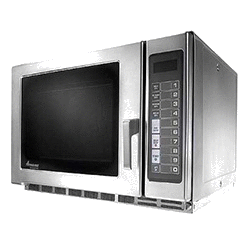
A microwave is programmable. |
| Program | A set of instructions which tells a computer what to do and when to do; the instructions must be writtin in a language which the computer understands. | A program is a list of instructions written in a programming language that is used to control the behavior of a machine, often a computer (in this case it is known as a computer program (wikipedia, 2011). | 
Example of a program. |
| RAM | Random Acess Memory, See also Primary Storage. | Random-access memory (RAM) is a form of computer data storage. Today, it takes the form of integrated circuits that allow stored data to be accessed in any order (i.e., at random) (wikipedia, 2011). | 
Image of a RAM stick. |
| ROM | Read Only Memory: contains just enough OS to tell computer how to read other parts of the OS. | Read-Only Memory: (computer science) memory whose contents can be accessed and read but cannot be changed (wordnetweb.princeton.edu/perl/webwn). | 
Image of the ROM in a computer. |
| Root | Short for root directory the main directory, in a hierarchical directory structure, which (logically) contains all other directories. In DOS- and Windows-based systems, the root directory is represented by a backslash (\). In Mac OS, Unix, and Linux systems, the root directory is represented by a forward slash (/). | The top level in a hierarchical file system. For example on a PC, the root directory of your C: drive contains all the second-level subdirectories on that drive(netdictionary,2011). | 
Example of a root directory in a computer. |
| Secondary storage | Any storage medium which provides (relatively) permenent storage of information. secondary storage is non-volatile and relatively inexpensive, but it's slow. With few exception, secondary storage cannot be acessed directly by the CPU. The most common example of secondary storage are magnetic and optical discs, magnitic tape and flash memory. | Also known as peripheral storage, is where the computer stores information that is not necessarily in current use. It is typically slower and higher-capacity than primary storage. It is almost always non-volatile. It is slow due to serial access (thus it is also termed Serial Access Memory) (Statemaster,2011). | 
Example of a USB device. |
| Software | A synonym of program | Written programs or procedures or rules and associated documentation pertaining to the operation of a computer system and that are stored in read/write memory; "the market for software is expected to expand" (wordnetweb.princeton.edu/perl/webwn). | 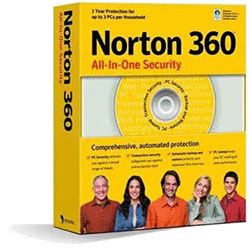
Example of softwares. |
| String | A collection of like units, treated as a whole; example: character string, bit | A sequentially ordered set of things or events or ideas in which each successive member is related to the preceding; "a string of islands"; "train of mourners"; "a train of thought" (wordnetweb.princeton.edu/perl/webwn). | 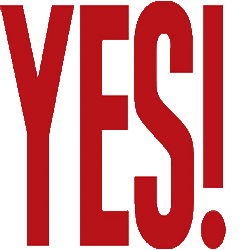
Example of a string. |
| System Unit | A plastic or metal box which contains the principle parts of a computer: The CPU, RAM, ROM, various connection cables and an AC/DC converter. In modern microcomputers its commen to find peripheral device installed inside the system unit; example included: modern, card reader. | The central component of any computer, the system unit contains the computer's CPU, memory, disk drives, and other essential components (Computerchimp,2011). | 
Example of a computer's System Unit. |
| USB | Universal serial bus; a standard for connecting peripherals to a computer over inexpensive cable. | Stands for Universal Serial Bus and is a connection port which supports the connection of peripheral devices and computer/electrical devices (PhotobookAmerica,2011) | 
Example of a Universial Serial Bus. |
 s
s


































